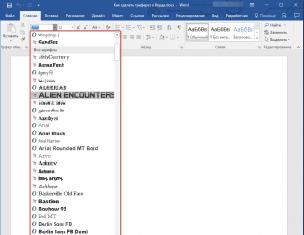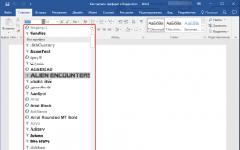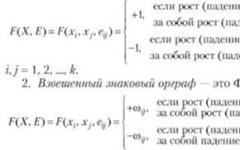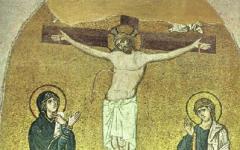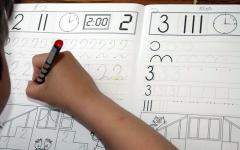План урока
Дисциплина:“Английский язык”
Тема: Buildingmaterials\Строительные материалы
Тип занятия: урок усвоения нового материала
Используемые методы: частично-поисковый, контроль, репродуктивный, упражнение, самостоятельная работа студентов.
Цели занятия:
- Обучающая: Способствовать обучению профессиональной лексики по теме:“Строительные материалы”, формированию репродуктивных умений, содействовать активизации лексического материала по данной теме.
- Воспитательная: Содействовать воспитанию всесторонне развитой личности, cпособствовать воспитанию чувства уважения к иностранному языку, создать условия для развития и углубления интересов студентов в выбранной ими области знания, в частности как средство получения профессионально-значимой информации.
- Развивающая:
Развитие:
навыков интегрированного труда во время учебных занятий,
логического мышления,
навыков общения,
памяти и внимания.
Межпредметные связи: предметы профессионально-технического цикла.
После изучения темы студент должен:
- знать:
типы строительных материалов, состав строительных материалов, лексический минимум по данной теме, грамматический материал: страдательный залог настоящего простого времени. - уметь:
воспринимать и переводить иностранную речь, работать со словарем, употреблять в речи страдательный залог настоящего времени, выполнять грамматические упражнения.
План занятия.
- Организационный момент – 5 мин.
1. постановка целей и задач
2. актуализация знаний - Ознакомление с новым лексическим материалом – 20–25мин.
1. фонетическая отработка лексических единиц по теме
2. введение и отработка новых лексических единиц - Закрепление. Отработка НЛЕ по теме – 40 мин.
1. на основе текста, выполнение упражнений к тексту
2. самостоятельная работа (работа в группах) - Подведение итогов урока – 10 мин.
1. домашнее задание
2. рефлексия
3. выставление оценок
Оснащенность урока:
- Учебно-методическое пособие.
- Словари.
- Раздаточный материал по новой лексике.
- Иллюстративный материал
- Оформление доски
Ход занятия
1. Приветствие и вступительное слово преподавателя (Greeting): объявление темы, цели, плана занятия.
Hello, dear students. I hope you are all f ine, aren’t you? So tell me please, who is absent today? Are you ready to work? Haven’t you forgotten your exercise – books at home?
Today we shall do some interesting work that refers to building industry.
2. Warm-up activity (языковая разминка): So, students, look at the blackboard, please. Here you can find some words and transcription.
Your task is to go to the blackboard and find transcription for each word. And then try to translate this word.
(Соедините слово с его транскрипцией):
| quebracho timber concrete steel lime stone brick sand fine sand masonry mortar plaster |
["mo:tə] ["meisnri] ["konkri:t] ["timbə] |
Tell me please, what is your profession? (Скажите, кто вы по профессии) Do you work with building materials? (вы работаете со строительными материалами?) Doyoulikeit? (Нравится?)
Canyoulayabrick? (Вы умеете класть кирпич?)
Did you built anything? (Что-нибудь строили?)
In order to build a house or road, you should know what building materials exist, so we must learn types of building materials (Для того чтобы простроить дом иль дорогу, вам следует знать какие строительные материалы существуют).
So, could you tell me the topic of our lesson? (Вы догадались, какая тема урока сегодня?)
Yes, you are right. (Правильно)
Let’s open your ex-books and write down the date and the topic of the lesson (открываем тетради и записываем число).
Very good. What building materials do you know in Russian? (какие строительные материалы вы знаете на русском?). ButwhatisforEnglish “кирпич” andsoon.
Look at the cards. I suggest you to play a game. Let’s read words try to mach English and Russian words. (Посмотрите на карточки. Я вам предлагаю игру. Подберите русские эквиваленты к английским)
I give you five minutes (явамдаю 5 минут). Let’s check (Проверяем). Name one by one (называем по очереди). If it is wrong, correct it (если не правильно, то исправляем).
3. Go on our work with the words (продолжаем работу с лексикой). Look at these lists (Посмотрите на тексты). Let’s read this text sentence by sentence, try to translate (Читаем по очереди каждое предложение и переводим). Some questions are there for you (и после текста будем выполнять задания)(см. Приложение 1 . )
I. Read and translate the following sentences and find the passive voice (Прочитайте и переведите следующие предложения, найдите в тексте случаи употребления страдательного залога):
Timber, concrete, steel, lime, gypsum, cement are used in the building construction.
The building brick is made of clay containing a considerable proportion of fine sand.
The most important building materials may now be considered to be structural steel and concrete
II. Pick out from the text all the words denoting building materials; give their translations into Russian (выберите из текста все слова, которые относятся к строительным материалам).
III. Answer the questions (Ответьте на вопросы):
1. What materials are used in building construction?
2. What materials form very important elements in masonry structures?
3. What is the most accurate method of measuring proportions?
IV. Let’s make groups and prepare for the information using this text (Давайте разделимся на группы и каждая группа готовит сообщение, пользуясь текстом):
Important building materials. 2. Brick. 3. Timber. 4. Lime.
Summarizing (подведение итогов). Shortly, what did we study today? What was new for you, St1, St2…
Look at the board again(Взгляните на доску). One person from each group goes to the blackboard and writes what it is (один студент из группы выходит к доске и пишет название строительного материала).
Guess, please, what it is? (Отгадайте, что это) (см. Приложение 2 .)
Home task (Домашнее задание): To learn these words by heart.
Thank you for your work at lesson. Your worktoday rather good. But some of you were very active. I give you “a five”. Other students have made a lot of progress. I put them “a four”. You need some more practice with…
Introspection (рефлексия): To find out students attitude to work at the lesson.
Did you like the way we have worked today? Any comments? Have you questions? Good-bye.
Литература:
- Грязнова С.С. Учебно-методическое пособие по английскому языку для студентов строительного профиля. – Сургут, 2010 – 44с.
- Восковская А.С., Карпова Т.А. Английский язык для средних специальных учебных заведений. – М.: Феникс, 2006.
- Англо-русский строительный словарь.: – М., 1961.
- Горбунова Е.В. и др. Пособие по английскому языку дл студентов II–III курсов строительных вузов. – М.: Высшая школа, 1978.
Учебник построен на базе стандарта курса иностранного языка для неязыковых специальностей и рассчитан на профессионально ориентированный этап обучения. Основная цель работы с учебником и практикумом развитие и совершенствование умений читать и переводить оригинальную литературу на английском языке по специальности, а также развитие навыков разговорной речи в пределах пройденной тематики.
Шаг 1. Выбирайте книги в каталоге и нажимаете кнопку «Купить»;
Шаг 2. Переходите в раздел «Корзина»;
Шаг 3. Укажите необходимое количество, заполните данные в блоках Получатель и Доставка;
Шаг 4. Нажимаете кнопку «Перейти к оплате».
На данный момент приобрести печатные книги, электронные доступы или книги в подарок библиотеке на сайте ЭБС возможно только по стопроцентной предварительной оплате. После оплаты Вам будет предоставлен доступ к полному тексту учебника в рамках Электронной библиотеки или мы начинаем готовить для Вас заказ в типографии.
Внимание! Просим не менять способ оплаты по заказам. Если Вы уже выбрали какой-либо способ оплаты и не удалось совершить платеж, необходимо переоформить заказ заново и оплатить его другим удобным способом.
Оплатить заказ можно одним из предложенных способов:
- Безналичный способ:
- Банковская карта: необходимо заполнить все поля формы. Некоторые банки просят подтвердить оплату – для этого на Ваш номер телефона придет смс-код.
- Онлайн-банкинг: банки, сотрудничающие с платежным сервисом, предложат свою форму для заполнения.
Просим корректно ввести данные во все поля.
Например, для " class="text-primary">Сбербанк Онлайн требуются номер мобильного телефона и электронная почта. Для " class="text-primary">Альфа-банка потребуются логин в сервисе Альфа-Клик и электронная почта. - Электронный кошелек: если у Вас есть Яндекс-кошелек или Qiwi Wallet, Вы можете оплатить заказ через них. Для этого выберите соответствующий способ оплаты и заполните предложенные поля, затем система перенаправит Вас на страницу для подтверждения выставленного счета.
- Английский язык для студентов строительных специальностей, Гарагуля С.И., 2011 - Учебное пособие построено на базе вузовского стандарта курса иностранного языка для неязыковых вузов и рассчитано на профессионально-ориентированный этап обучения. Основная … Книги по английскому языку
- Английский язык для делового общения, Гарагуля С.И., 2013 - Учебное пособие, построенное на базе государственного образовательного стандарта и в соответствии с программой курса иностранного языка для неязыковых вузов и … Книги по английскому языку
- Грамматика английского языка, Книга для родителей, 4 класс, Барашкова Е.А., 2019 - Данное пособие полностью соответствует федеральному государственному образовательному стандарту (второго поколения) для начальной школы. Оно представляет собой третий компонент учебного комплекта, … Книги по английскому языку
- Методика преподавания английского языка в ВУЗе, Дмитренко Т.А., 2009 - Данное учебное пособие посвящено проблеме использования новых образовательных технологий в системе высшего профессионального образования. В пособии рассматриваются наиболее современные и … Книги по английскому языку
- Английский язык для студентов энергетических специальностей, Луговая А.Л., 2009 - Целью данного пособия Луговой А. Л. служит обучение студентов энергетических специальностей устной речи, чтению и переводу текстов по специальности. Все … Книги по английскому языку
- Английский язык для менеджеров по PR и рекламе, Захарова Е.В., Ульянищева Л.В., 2011 - Учебное пособие подробно освещает специфику английского языка в сфере PR и рекламы. Книга состоит из трех разделов и приложения (аудиодиск … Книги по английскому языку
- Cool grammar, Английская грамматика, 1-4 класс, Уровень 1, Наумова Е.А., 2013 - Новые книжки серии Cool Grammar представляют собой учебные пособия, которые соответствуют учебному плану, а тематики и сферы общения - действующим … Книги по английскому языку
- Английское словообразование, English Word Formation, Шидловская С.Н., 2010 - Цель пособия - систематизация теоретического и практического учебного материала по английскому словообразованию. В теоретической части рассматриваются смысловые функции суффиксов и … Книги по английскому языку
- 55 устных тем по английскому языку, 5-11 класс, Смирнов Ю.А., 2008 - Сборник включает все разговорные темы по английскому языку, соответствующие программе общеобразовательной школы, которые издаются в 5-11 классах, а также выносятся … Книги по английскому языку
- Занимательные истории для чтения на английском языке, 4 класс, Яцкова С.С., 2009 - Пособие содержит адаптированные для учащихся 4 класса сказки и рассказы на английском языке и задания к ним, ориентированные на дальнейшее … Книги по английскому языку
- Практическая грамматика английского языка, Часть 1, Каменский А.И., Каменская И.Б., 2002 - Практическая грамматика английского языка, Часть 1 , Каменский А.И., Каменская И.Б., 2002. Настоящее справочное пособие представляет собой изложение нормативного курса … Книги по английскому языку
Тесты по профессиональному английскому языку
для строителей технических колледжей
2017г.
Вариант I
1. In hot countries people made their homes in the ___ and used leaves to protect themselves from rain or sun.
A Trees
B roofs
C roads
D tables
E sun
2. In colder countries they dwelt in ___
A mountains
B caves
C moon
D towns
E cities
3. Later people left their caves and trees and began to build houses of different
materials such as ____
A air, water, sugar
B salt, stones, ground
C mud, wood, stones
D concrete, brick, salt
E sugar, milk, coffee
4. Concrete is an artificial kind of stone, much cheaper than _ __
A wood
B leaves
C stones
D brick
E mud
5. Modern buildings have …….
A two major parts
B three major parts
C six major parts
C five major parts
D four major parts
A houses
B palaces
C trees or caves
C streets
D water
7. Egyptian pyramids are made of ____
A stone
B wood
C brick
D water
E milk
8. The cheapest building material is____
A wood
B brick
C concrete
d) sugar
e) water
9. ___ is a man who erects wood frames, fixed wood floors, stairs and window frames.
A carpenter
B doctor
C teacher
D student
E driver
10. ___ is a tradesman who builds and repairs brickwork, lays frames.
A carpenter
B teacher
C mason
D bricklayer
E student
11. ____ is a stone worker or stone setter.
A teacher
B student
C mason
D carpenter
E doctor
12. …… is a tradesman who may be a fibrous plasterer or a plasterer in solid work.
A plasterer
B electrician
C crane operator
D mason
E plumber
13. There are two couches and an armchair in the ____________.
B living room E kitchen
C bathroom
14. What is the English for “ плотник”?
A teacher
B brick
C use
D size
E carpenter
15. The low level of monument is situated ____
A underground
B over ground
C in the sky
D in the river
E in the ocean
16. She ___ in the construction site an hour ago.
A working
B work
C worked
D has worked
E works
17. We ……study special subjects next year.
A shall study
B studying
C were studying
D studies
E study
18. We ……mane houses last year.
A building
B was building
C builds
D were build
E built
19. Find international word
A specialist
B skilled worker
C a builder
D building trade
E plumber
20. He ___ his leg while riding his bike at the weekend.
A was break
B broke
C breaking
D was breaking
E were breaking
21. The dead load of a building ….. the weights of the ceilings the frame the floor roofs and the walls
A includes
B included
C has included
D will include
E include
22. When I was young I ___ to be a engineer
A was wanting
B were want
C wanted
D wanting
E wants
23. What does construction of a building start with?
A foundation
B building material
C sand
D decoration
E excavation
24. We ___ a contract last year.
A has signed
B signed
C haven"t sign
D have sign
E signing
25. I ___ back from a business trip to France last weekend.
A come
B came
C never came
D have just come
E will come
A had
B have
C has
D did
E is
27. The buildings erected in nowadays can be divided into
A six general classes
B three general classes
C five general classes
D four general classes
E two general classes
28. He ___ many instruments.
A have
B has
C haves
D have got
E having
29. Who decides the size of the walls the floors the beams the girders?
A bricklayer
B builder
C welder
D architect
E master
30. The water supply and severage systems are called
A plumbing
B electricity
C ventilation
D heating system
E building
A 100 metre, D. Medvedev
B 198 metre, B. Clinton
C 676 metre, B. Obama
D 97 metre, N. Nazarbajev
E 50 metre, G. Bush
2. The student construction teams first appeared during ____
A the reclamation of Constitution
B the reclamation of virgin lands in 1959
C the laying railways in 1962
D the laying underground in 1959
E the adaptation of the Constitution
3. The first student construction team worked at ____
A a local power station in Altai
B a factory in the USA
C in a capital of our country
D in Great Britain
E a state farm in Kazakhstan
4. The students study builder’s professions at ____
A institutes and universities
C the private schools
E schools
5. Each team has foremen of ____
A its own
B construction organization
C a teacher
D private teacher
E 2012
6. The student’s movement is ____
A unused
B obligatory
C voluntary
D economical
E easy
7. I study at ___ of our college.
A building Department
B bookkeeping Department
C law Department
D technological Department
E i don’t know
8. The weight of each brick is from ____
A 3 – 6 kg
B 1,5 – 2 kg
C 3,5 – 4 kg
D 0,5 – 1,5 kg
E 7 – 8 kg
9. The ancient ___ discovered how to cut stone for building purposes.
A kazakhs
B russians
C americans
D egyptians
E italians
10. The Baiterek monument is situated in ___.
A Almaty
B Pavlodar
C Petropavlovsk
D Shimkent
E Astana
11. Concrete is ____ in compression but weak when used for stresses.
A green
B grey
C strong
D usefulness
E black
12. Plastics can be applied ____
A only in radio engineering
B to almost every branch of building
C in all shops yesterday
D in our college in recent years
E nowhere
13. Plastics are used ____
A only for decoration
B construction
C for decoration of our college
D for walls and roofs
E not only for decoration
14. The contrast between London and Astana is ____
A truly remarkable
B beautiful
C fantastic
D usefulness
E awful
A flat
B book
C flower
D picture
E TV set
16. A builder ___ a lot of countries.
A visiting
B was visited
C visited
D was visiting
E have visiting
17. A master ___the window twice last week.
A cleaning
B was clean
C has cleaning
D cleaned
E will clean
18. Did you ___ the film on TV last night?
A watch
B watched
C watching
D have watch
E to watch
19. I played tennis yesterday but I ___ win.
A do not
B does not
C did not
D was not
E am not
20. Yesterday he ___ to work by car.
A was going
B went
C was went
D going
E gone
21. I ___my teeth three times yesterday.
A cleaning
B clean
C was clean
D was cleaned
E cleaned
22. Did she ___ to the theatre last week?
A go
B went
C going
D was going
E gone
23. He ___ home early yesterday in the evening because he felt ill.
A go
B going
C gone
D went
E goes
24. The party ___ very good, so we didn’t stay long.
A was not
B did not
C were not
D do not
E will be
25. We ___ a lot of work yesterday.
A done
B do
C was doing
D doing
E did
26. The party ___ at midnight.
A was finishing
B was finish
C finished
D finish
E finishing
27. Caroline ___ to the cinema three times last week.
A going
B was gone
C went
D go
E gone
28. What ___ yesterday?
A did you do
B you doing
C did you doing
D had you done
E do you did
29. I saw Barbara but I didn’t ___ Jane.
A to see
B saw
C seen
D seeing
E see
30. My friend ….. in the construction site.
A works
B work
C will work
D working
E has worked
Ответы на лексико-грамматический тест
3 вариант
1. Foundations keep the walls and the floors:
A from direct contact with the soil
B from indirect with the soil
C from cracks in the walls
D from direct contact with the water
E from direct contact with the sun
2. Brick is ………… made of clay.
A natural materials
B ancient materials
C artificial material
D expensive
E cheap
3. Concrete is produced:
A by combining coarse and fine aggregates, cement and water.
B by combining coarse and fine aggregates
C by combining cement and water
D by combining mud
E by combining clay.
4. The roof serves:
A for ornamental purposes
B to keep the walls and windows
C for protecting the interior of the building
D to keep the walls
E to keep the windows
5. The main functions of interior walls is:
A dividing the space of the constructions
B transmitting floor /roof loads to a foundation
C protective
D decoration
E warm
6. The major parts of the building are:
A walls, windows, roots
C walls, foundations
D floor
E attic
7. Buildings made of stone are
A unstable
B non-durable
C durable and fire resisting
D fire resisting
E durable
8. A measure is used…
A for painting.
B for cleaning of the plaster.
C for measuring.
D for checking the position.
E for connecting wooden materials.
9. A level is used
C for painting
D for checking the position
E for cleaning of the plaster.
10. The lower parts of any construction
A base
B site
C panel
D floor
E roof
11.A place where a house is built
A site
B forest
C sand
D stadium
E square
12. We work with the help of it
A instrument
B car
C tractor
D level
E trowel
13. The upper part of a building
A attic
B ceiling
C floor
D ground
E tube
14. A place which protects people from weather
A shelter
B museum
C theatre
D library
E park
15. What is your profession?
A a builder
B a worker
C a plumber
D a welder
E a joiner
16. A building material used to prepare concrete
A sand
B stone
C iron
D water
E clay
A oak
B birch
C poplar
D spruce
E alder
18. What does construction of a building start with?
A building material
B excavation
C transport
D framework
E building equipment
19. Mush what we do takes place
A Indoors
B Outdoors
C house
D construction site
E building
20. We need more light
A By day
That is provided by nature.
B By night
C in the morning
D in the evening
E midday
21. Every construction serves as accommodation
A for people and enterprises
B for people, families, organizations and enterprises
C for people and hostels
D for people and shops
E for people
22. Sporting facilities include
C stadiums
D swimming pools
E aquaparks
23. The superstructure of a building is
A its above-ground part
B its below-ground part
C foundation
D floor
E walls
24. The substructure of a building is
A its below-ground part
B its above-ground part
C floor
D foundation
E walls
25. The foundation of a structure transmits its loads
A into the lower strata of earth
B into the upper stratum of earth
C floor
D attic
E roof
26. Sinking may cause
A cracks in the roofs
B cracks in the roofs and the floors
C crack in the wall
D cracks in the walls
E cracks in the floors
27. The upper stratum of earth is removed in order to guard the foundation
A from rain and sun
B from water and wind erosion
C from sun
D from rain
E from snow
28. In the cold climatic zones foundations should be placed
A below the level of freezing
B above the level of freezing
C cold
D warm
E rain
29. Foundations should not be placed
A on inorganic soils
B on organic soils
C plants
D grass
E sand
30. Foundations keep the walls and the floors
A from indirect contact with the soil
B from direct contact with the soil
C ground
D soil
E mud
Ответы 3 вариант
1. a
2. c
3. a
4. c
5. a
6. b
7. c
8. c
9. d
10. a
11. a
12. a
13. a
14. a
15. a
16. a
17. a
18. b
19. a
20. b
21. b
22. b
23. a
24. a
25. b
26. d
27. b
28. a
29. b
30. b
4 вариант
1. During the practice trainers …….money for their work
A gets
B have got
C is getting
D got
E get
2. This profession……very interesting respected and honoured and we like it.
A is
B am
C are
D was
E were
3. Old houses ….. with time.
A destroy
B are destroyed
C is destroyed
D have destroyed
E is destroying
4. A workman who paints walls is …….
A a painter
B a welder
C a carpenter
D a builder
E a mason
5. Concrete is ………… kind of stone.
A natural materials
B an ancient materials
C an artificial
D expensive
E cheap
6. Later people began to build houses of ………
A different materials such as mud, wood, or stones.
B ancient materials
C trees
D woods
E concrete materials
7. Every building should be provided with water, electricity, ventilation and heating systems.
A здание обеспечено водой, электричеством вентиляцией, и центральным отоплением.
B здание обеспечили водой, электричеством, вентиляцией, и центральным отоплением.
C каждое здание должно быть обеспечено водой, электричеством, вентиляцией, и центральным отоплением.
D каждое здание будет обеспечено водой, электричеством, вентиляцией, и центральным отоплением.
E каждое здание обеспечено водой, электричеством, вентиляцией, и центральным отоплением.
8. The dead load of building includes the weights of
A the ceilings, the frame, the floor, roofs and the walls
B ventilation
C heating system
D electricity
E attic
9. For very small buildings foundation design is
A rather simple
B rather complex
C easy
D heavy
E small
10. Live loads include the weights of
A the people, the furnishings and equipment
B water, electricity and ventilation systems
C equipment
D heating system
E tubes
11. We need more light
A by day
that is provided by nature.
B by night
C in the morning
D in the evening
E midday
12. The major parts of the building are:
A walls, windows, roots
B foundation, superstructure, substructure
C walls, foundations
D floor
E attic
13. Sporting facilities include
A stadiums and swimming pools
B stadiums, aquaparks, swimming pools, sporting complexes
C Stadiums
D swimming pools
E aquaparks
14. Concrete is an artificial kind of stone, much cheaper than ___
A wood
B leaves
C stones
D brick
E mud
15. Modern buildings have …….
A two major parts
B three major parts
C six major parts
D five major parts
E four major part
16. ____ is a stone worker or stone setter.
A teacher
B student
C mason
D carpenter
E doctor
17. Valuable timber used in construction
A oak
B birch
C poplar
D spruce
E alder
18. A level is used
A for cleaning wooden materials.
B for connecting wooden materials.
C for painting
D for checking the position
E for cleaning of the plaster
19. What does construction of a building start with?
A building material
B excavation
C transport
D framework
E building equipment
20. The Baiterek monument is situated in ___.
A Almaty
B Pavlodar
C Petropavlovsk
D Shymkent
E Astana
21. The ancient __discovered how to cut stone for building purposes.
A kazakhs
B russians
C americans
D egyptians
E italians
22. The students study builder’s professions at ____
A institutes and universities
B factory schools of construction organizations
C the private schools
D Petropavlovsk building-economical college
E schools
23. My friend ….. in the construction site.
A works
B work
C will work
D working
E has worked
24. The lower parts of any construction
A base
B site
C panel
D floor
E roof
25. A place which protects people from weather
A shelter
B museum
C theatre
D library
E park
26. There are two couches and an armchair in the ____________.
A master bedroom D utility room
B living room E kitchen
C bathroom
27. The low level of monument is situated ____
A underground
B over ground
C in the sky
D in the river
E in the ocean
28. We work with the help of it
A instrument
B car
C tractor
D level
E trowel
29. She ___ in the construction site an hour ago.
A working
B work
C worked
D has worked
E works
30. The upper part of a building
A attic
B ceiling
C floor
D ground
E tube
Ответы 4 вариант
1. e
2. a
3. b
4. a
5. c
6. a
7. c
8. a
9. a
10. a
11. a
12. b
13. b
14. d
15. b
16. c
17. a
18. d
19. b
20. e
21. d
22. d
23. a
24. a
25. a
26. b
27. a
28. a
29. c
30. a
BUILDING CONSTRUCTION
SECTION 1 VOCABULARY AND WORD STUDY
1. Read and memorize the active vocabulary to the text "Building Engineering as a Discipline" and translate the given sentences.
1. build (built) v - строить
building n - здание, строение, сооружение; строительство
building design - проектирование зданий They build new houses in that area. Types of buildings may be
classified according to the role in the community. Modern building
constitutes a vital element of national industry.
2. construct
v - строить, сооружать
construction
n
- строительство, стройка
building construction
- домостроение
They are planning to construct a new supermarket near our house. The factors that condition the selection of materials for construction include availability, cost and physical properties. During building construction, several things went wrong.
3. building engineering
[,end3i"ni3rm] -- строительство гражданских зданий
civil engineering
["sivl] - гражданское строительство structural engineering
["strAktfral] - проектирование зданий и сооружений
Building science and building engineering are fields of study concerned with the technical performance of buildings, building materials, and building systems. I am doing a civil engineering course at the university, which is very hard, but I am really enjoying it. Structural engineering has made rapid strides in the last century.
4. air-conditioning
["eaksn.dijnin] n
- кондиционирование
air-conditioner
n -
кондиционер
Buildings have air-conditioning. There are many similarities in the way an air-conditioner -works to the way a refrigerator works.
5. mean
(meant
) v- значить; подразумевать
means
n
- средство, способ; ресурсы
by means of - посредством
The red light means "Stop". They didn"t provide me with any means of transport. The tests were marked by means of a computer.
6. diverse
яа^"- разнообразный, разный
diversity
n
- разнообразие, многообразие
The growing building industry offers diverse job opportunities. He has a great diversity of interests.
7. impact ["impa?kt] - n воздействие, влияние
The computer has had (made) a great impact on modern life.
8. measure
["тезэ] - п
умера; измерять, иметь размеры
measurement
["тезэтэпг] п
- размер, измерение
We take certain measures to reduce the consumption of the material. She measured the table. This table measures two metres
Английский язык для студентов строительных специальностей
UNIT 1. BUILDING CONSTRUCTION
By one metre. We can find the size of something by means of measurement.
9. vary ["vean] v - менять, изменять, варьировать
various ["vearias] adj - различный, разный, разнообразный variety n - разнообразие
Steel varies considerably in its microstructure. The demand for various building materials is enormous. A wide variety of mass-produced elements are now available.
10. maintain
v - обслуживать, содержать в ис
правности, поддерживать, сохранять, содержать
maintenance
["meintanans] n -
уход, содержание в ис
правности, текущий ремонт, поддержка, содержание,
сохранение
Some floor materials are easy to maintain. These operations involve the construction, maintenance of structures, grounds, and so on.
11. structure
["strAktfa] n
- конструкция, сооружение, стро
ение, здание, конструкция
building structure - строительная конструкция, здание
Wood structures were very common in earlier times. The more insulation we provide, the more the building structure costs.
12. foundation n - фундамент
First they laid the foundation, and then they built the walls.
13. computer-aided design (CAD) - автоматизированное проектирование
Today, the use of Computer-Aided Design techniques has revolutionised design and construction processes within the industry.
14. facility
n
- устройство, приспособление, обо
рудование; сооружение; {pi.)
условия, возможности,
средства
A new facility had been built just outside the city to process all the sewage. The new factory has enabled to bring research and development activities under the same roof as all production facilities.
15. perform
v
- исполнять, выполнять, совершать
performance
и - производительность, эф
фективность, кпд; эксплуатационные характеристики;
работа
They perform a considerable amount of building work at the factory. This enables us to ensure the good performance of the beams.
16. utility
n - (pl.)
инженерные сети; коммуналь
ные услуги; коммунальные предприятия обслуживания
(сооружения)
conservation utility [,konsa"veifn] - управление по охране природы и рационального природопользования
The introduction of urban utilities improved life in the city.
17. survey
["sa:vei] n v
- топографическая съемка
(служба); производить топографическую съемку, меже
вать
surveying n - съемка, промер, картирование surveyor n - геодезист, маркшейдер
Surveys are made for many purposes, such as the determination of areas, and the plotting of maps. They started to survey the piece of land that the new motorway will pass through. Surveying is employed to measure and locate lines and angles on the surface of the earth. Many new instruments are employed to facilitate the surveyor"s work.
Учебное пособие построено на базе ВУЗовского стандарта курса иностранного языка для неязыковых ВУЗов и рассчитано на профессионально-ориентированный этап обучения. Основная цель учебного пособия - развитие и совершенствование умения читать и переводить оригинальную литературу по специальности, а также навыков устной речи и аудирования в пределах пройденной тематики. Уделяется особое внимание расширению словарного запаса по строительному делу, изучению и тренировке грамматических структур, которые характеризуются высокой частотностью употребления в научной речи
Предназначено для студентов инженерно-строительных ВУЗов, может быть рекомендовано магистрантам, аспирантам, научным работникам и широкому кругу специалистов-практиков, желающих повысить свой уровень владения профессиональным английским языком.
Примеры.
Before you read Text 1A “Building Engineering as a Discipline”, discuss these questions with your groupmates or teacher.
a) Do you know how building construction began?
b) Is there any difference between civil engineering and building engineering?
c) Is building engineering a big subject?
d) Why is building engineering very important in modem life?
e) What building engineering courses are usually taught at higher educational institutions?
f) What degrees do building engineering academic programmes provide?
Answer the questions that follow.
1. What is the most striking feature of British towns and cities?
2. What does a British individual house look like?
3 How do you understand the English proverb: “An Englishman’s home is his castle”?
4. When did councils start building blocks of flats?
5. Are blocks of flats popular in Britain?
6. What is the favourite building material in Britain today?
CONTENTS
Предисловие
UNIT 1. BUILDING CONSTRUCTION
UNIT 2. GREAT CIVIL ENGINEERS
UNIT 3. JOBS IN CONSTRUCTION
UNIT 4. A LIVING PLACE
UNIT 5. BUILDING MATERIALS
UNIT 6. BUILDING SCIENCE
UNIT 7. STRUCTURAL ELEMENTS
UNIT 8. STRUCTURAL ENGINEERING
UNIT 9. SURVEYING
UNIT 10. FOUNDATIONS OF BUILDINGS
UNIT 11. BUILDING THE WALLS
UNIT 12. FINISHING THE INSIDE
SUPPLEMENTARY READING
TAPESCRIPTS
Bibliography.
Бесплатно скачать электронную книгу в удобном формате, смотреть и читать:
Скачать книгу Английский язык для студентов строительных специальностей, Learning Building Construction in English, Гарагуля С.И., 2011 - fileskachat.com, быстрое и бесплатное скачивание.
Следующие учебники и книги:
Предыдущие статьи:


